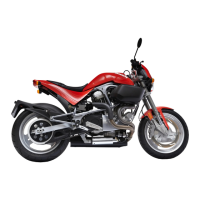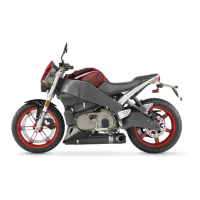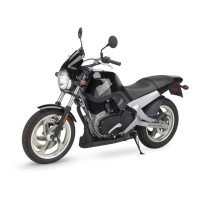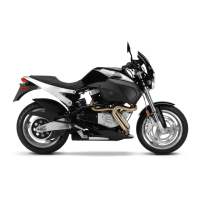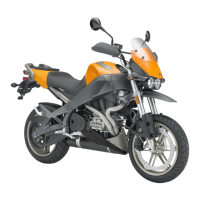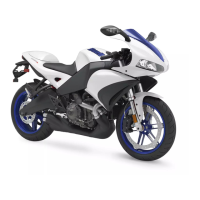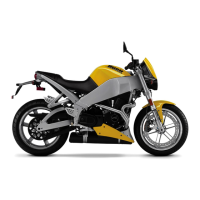2-38
SUSPENSION THEORY
DEFINITIONS
●
Compression:
Suspension is compressed when the
wheel moves upward.
●
Damping:
Resistance to movement. Damping affects
how easily the suspension can move and limits oscilla-
tion of the system once movement has begun.
●
Preload:
The spring is compressed somewhat during
assembly. This initial compression provides a “loaded”
condition in the spring. This compression is referred to as
preload.
●
Rebound:
The suspension is rebounding when it is mov-
ing back from being compressed.
GENERAL
1
WARNING
Before evaluating and adjusting suspension settings,
check the motorcycle’s tires. Tires must be in good con-
dition and properly inflated. Failure to check the tires
may cause personal injury.
See Figure 2-44 and Figure 2-45. The rear suspension fea-
tures a WP Suspension shock absorber that adjusts for com-
pression and rebound damping as well as spring preload.
See Figure 2-46. The front suspension uses WP Suspension
inverted forks that adjust for compression and rebound damp-
ing. These forks offer strength and stiffness for improved slid-
ing action, better shock absorption and compliance with the
road.
If the preload adjustment is correct, and you have the
rebound and compression damping set at the factory recom-
mended points the motorcycle should handle and ride prop-
erly. If you are unhappy with these settings they can be
changed according to the following procedures.
NOTE
Evaluating and changing the rebound and compression
damping is a very subjective process. Many variables affect
motorcycle handling under different circumstances. Changes
should be approached carefully.
Figure 2-44. Rear Shock Rebound Adjuster
Figure 2-45. Rear Shock Compression Adjuster
Figure 2-46. Front Fork Adjusters
5572
7 adjustments
5571
12 adjustments
5542
Front fork rebound
damping adjuster
Front fork compression
damping adjuster
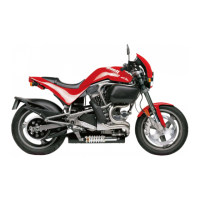
